Antiques and The Arts Weekly | September 27, 2024 | pg 24

“Genl. Putnam: The Iron
Son of ’76’,” circa 1845, N.
Currier, Publisher. Greenwich
Historical Society.
COS COB, CONN. -In anticipation of the upcoming 250th anniversary of the Declaration of independence in 2026, Greenwich Historical Society presents a dynamic exhibition that takes a fresh look at the impact of the Revolutionary War on Greenwich and surrounding communities. “Greenwich During the Revolutionary War: A Frontier Town on the Front Line” explores the dangers and shifting loyalties for a border town and its citizens during the war for independence.
The exhibition is on view in the Frank Family Foundation Special Exhibitions Gallery from October 16 through March 9.
After the Battles of Lexington and Concord, the Revolutionary War soon spread to Connecticut, particularly Fairfield County and Greenwich, the gateway to patriotic New England. With their safety and livelihood at risk, residents had to choose whether to support American independence, to remain loyal to King George III or to claim neutrality. This exhibition tells the story of the people of Greenwich who were living, working, fighting, fleeing and dying on the front line.
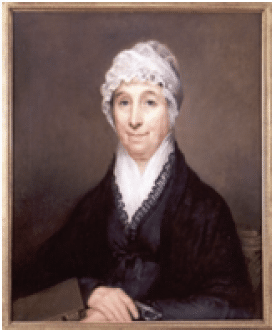
“Sarah Scudder Isaacs Bush” by William
Dunlap, 1815, Greenwich Historical Society.
Sarah Scudder Isaacs Bush, wife of David
Bush, was pregnant with their second child
when the British raided Cos Cob, setting
fires to the salt works across from their
home. Her husband was arrested the next
day as a suspected Loyalist since their home
was left unscathed during the attack.
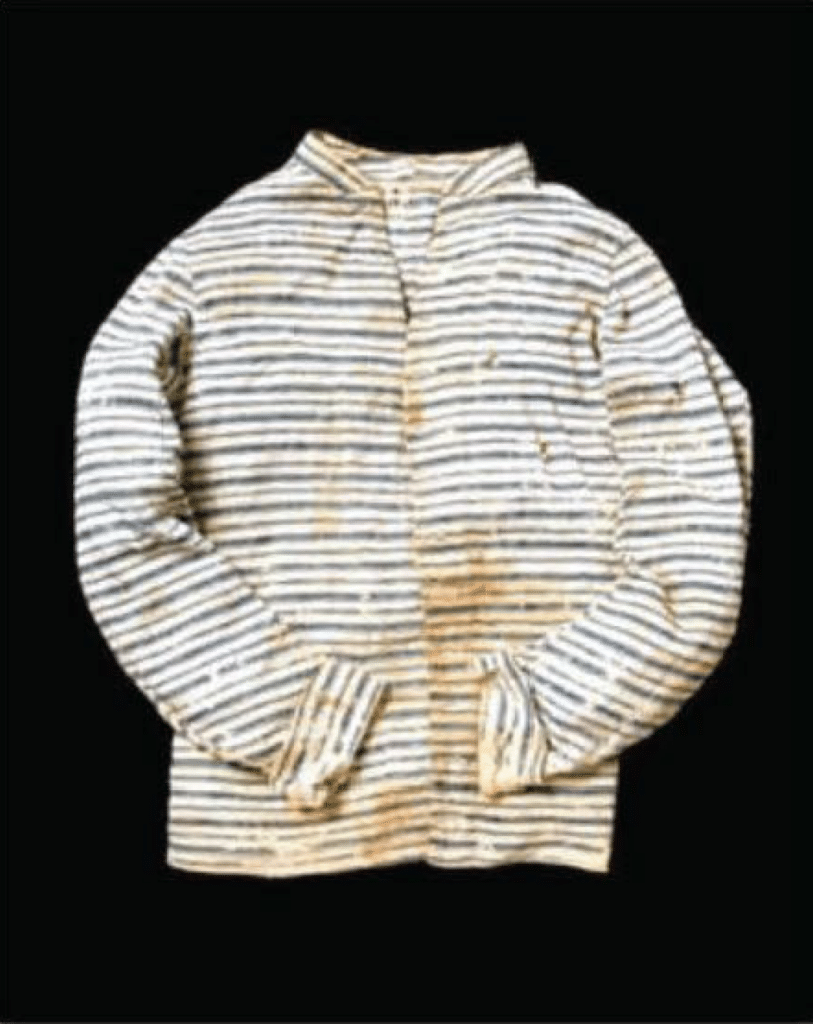
Jacket, Obadiah Mead, circa 1775, Greenwich
Historical Society. Obadiah Mead was
wearing this jacket when he was shot and
killed by the British in a raid.
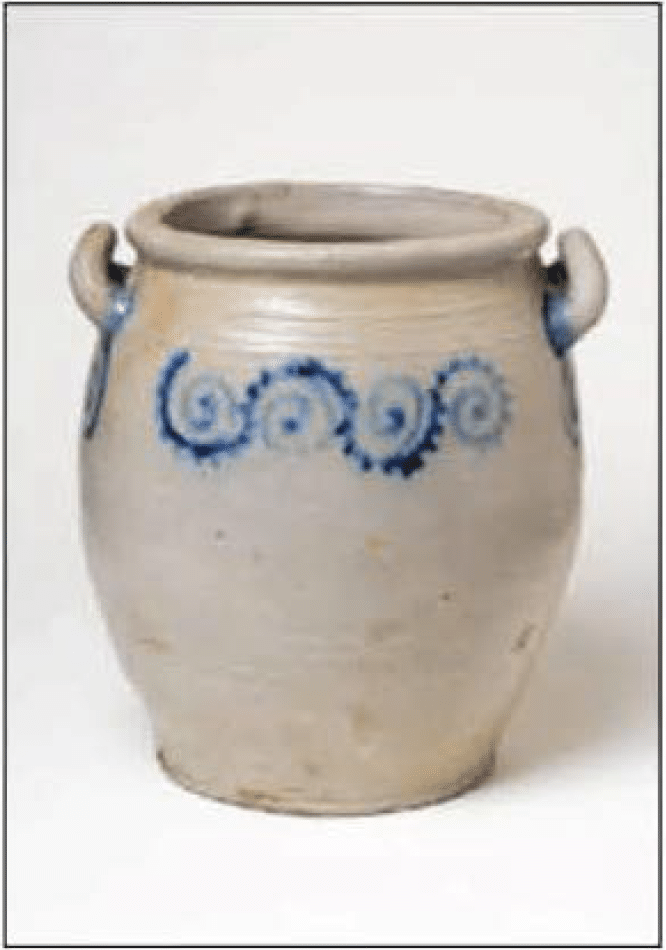
Jar, Captain Abraham Mead,
late Eighteenth Century,
Greenwich Historical Society.
Abraham Mead, of
Greenwich, was one of Connecticut’s
first stoneware
potters. Mead was also a
militia captain and a member
of the Committee of
Safety and Inspection.
Documents and relics handed down through generations include meticulously preserved letters and diaries that provide a moving tribute to the trauma and hardships they endured for the cause of liberty and freedom. A bullet ridden jacket worn by Greenwich’s Obadiah Mead when he was shot and killed in 1779 is particularly touching.
“The Revolutionary War happened Long ago, but the choices people made then, the courage they demonstrated, the fear and loss they struggled to overcome, mirror many life experiences today,” said exhibition curator Kathy Craughwell Varda. “My hope is that visitors will draw comparisons to their own lives and experiences, moments when they took a stand for what they believed in and realize we are not that different from the men and women who lived through the American Revolution.”

“Untitled: Bush Grist Mill and Bush-Holley
House” by George Edward Hall, 1884, Greenwich
Historical Society. This painting from
1884 shows David Bush’s warehouse and
home on the Mianus River.
The experiences of David and Sarah Bush, for whom the Bush-Holley House is named, and their extended family are explored in the exhibition. David Bush never clearly supported the Patriots or the Loyalists, but he had brothers-in-law who clearly supported American independence by serving in the Connecticut Militia and at least one who was arrested as a suspected Loyalist. He and his siblings enslaved at least 7 0 men, women and children – and the experiences of five of these men and women during the Revolutionary War are told for the first time in this exhibition.
“Looking around Greenwich today, it’s hard to see traces of that community that fought for its survival and independence 250 years ago. This exhibition presents the type of storytelling I think we do best,” said Historical Society executive director Debra Mecky. “I believe visitors will be surprised and delighted to learn about the men and women, free and enslaved, that left their mark on Greenwich during the Revolutionary War.”
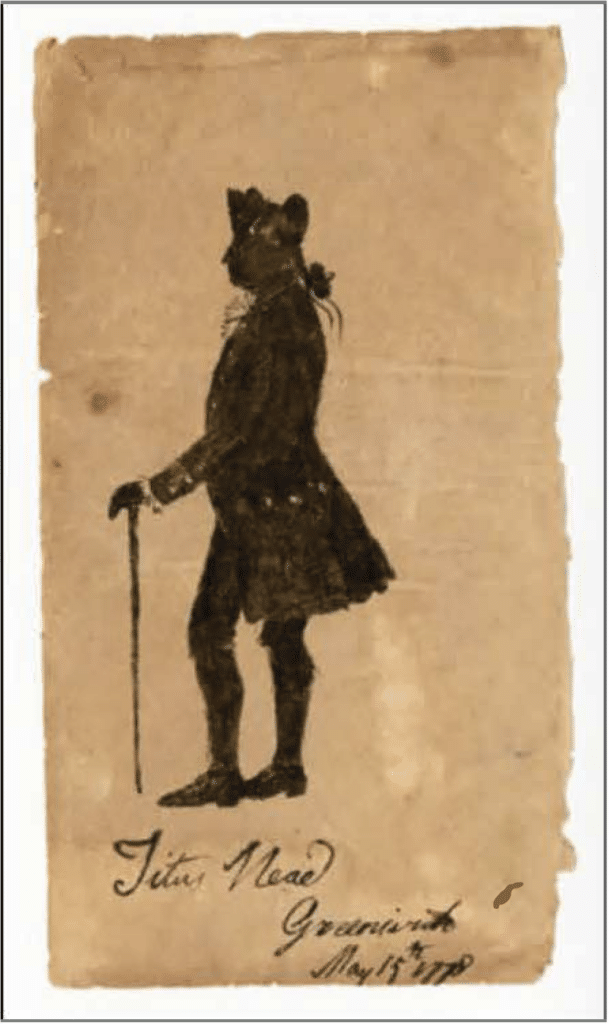
Silhouette of Titus Mead, May 15, 1778,
Greenwich Historical Society. Titus Mead of
Greenwich was a Patriot and member of the
Committee of Safety and Inspection.
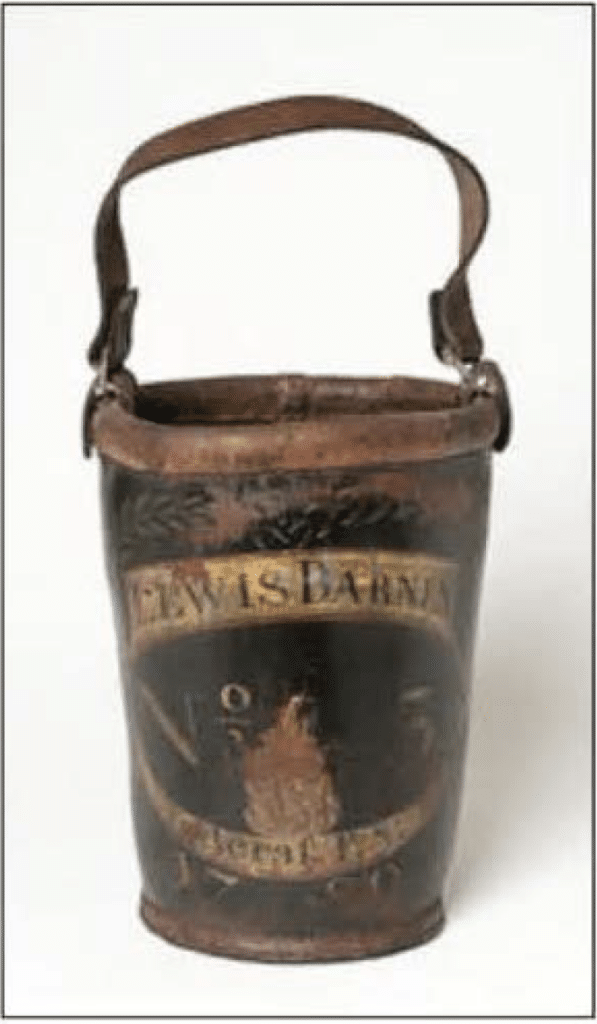
Fire Bucket, 1780, Greenwich
Historical Society. Every
colonial home had at least
one fire bucket to use to help
extinguish fires. However,
during the burning of Norwalk
and Fairfield, nothing
could be done to put out the
raging fires.
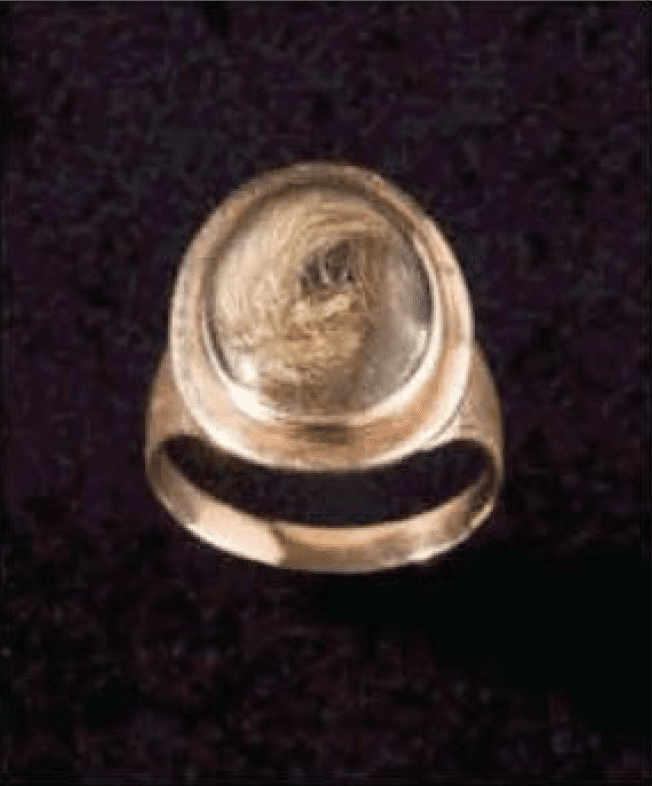
Mourning Ring, 1797, Greenwich
Historical Society.
Mourning ring made from
the hair of David Bush, for
his family following his
death in 1797. During the
American Revolution, Bush
was suspected of being a
Loyalist and was arrested
and jailed.
The exhibition is accompanied by a series of thematically related special events, lectures, family programs and guided gallery tours.
Greenwich Historical Society is at 47 Strickland Road. For information, 203-869-6899 or www.greenwichhistory.org.

